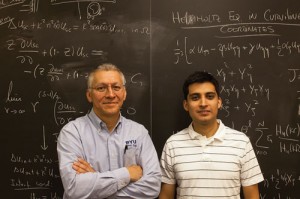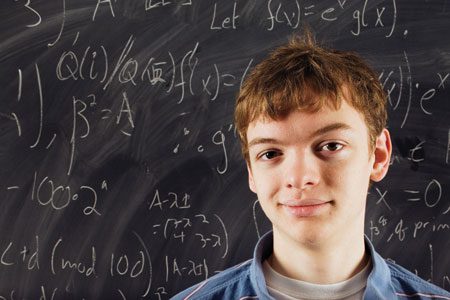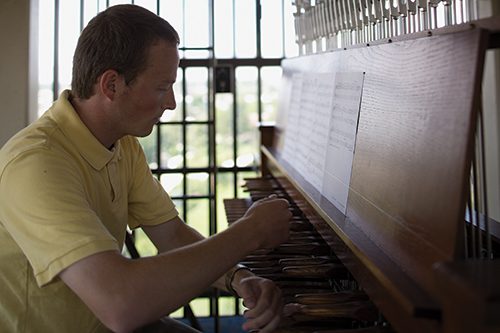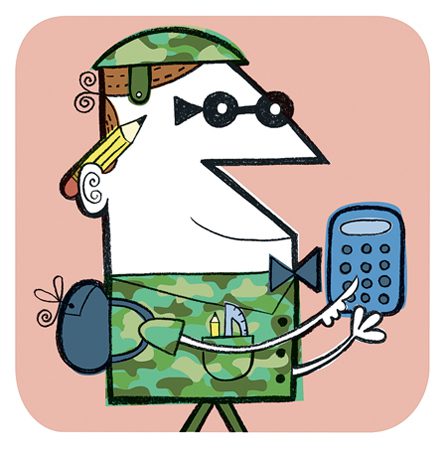
Sebastian Acosta (right) with mentor Vianey Villamizar; the pair published six papers.
They share Latin heritage, a love for differential equations, and bylines on journal articles. But those connections weren’t as apparent the day they met, when sophomore Sebastian I. Acosta (BS ’09) showed up at associate math professor Vianey Villamizar’s door, volunteering as a research assistant to a professor he didn’t know. Villamizar, knowing nothing of Acosta, let him be his grader.
Five years later, Acosta has published seven papers in peer-reviewed math journals—six coauthored with Villamizar. Six of the seven were published while Acosta was an undergrad. Acosta, a math and mechanical engineering double-major, hopes to publish two more before he graduates with his master’s in math next year.
“It is highly unusual for an undergraduate to publish in a peer-reviewed journal,” says Grétar Tryggvason, editor of the Journal of Computational Physics, which published Acosta’s seventh article in August. “It takes a lot of drive on their part and a mentor who is willing to provide opportunities.” Villamizar, like most math professors, can mentor only a few students at a time. “At first it’s an investment,” he says. “You have to put a lot of time into training and teaching. But in the long range it pays off; they may become real contributors.”
Acosta, from Chile, and Villamizar, from Venezuela, sometimes use their native Spanish, which helps them to more clearly communicate about abstract ideas. They also enjoy talking sports, mainly soccer, and having joint family dinners.
The pair uses mathematical tools to solve engineering and physics problems. Their most recent publication, on which Acosta is lead author, deals with how waves scatter when they hit multiple obstacles and may allow for deeper applications in MRI, sonar, or radar technology.
The two hope to continue their research relationship after Acosta graduates and pursues his PhD. “We will have many more papers to do in the future,” says Acosta.









